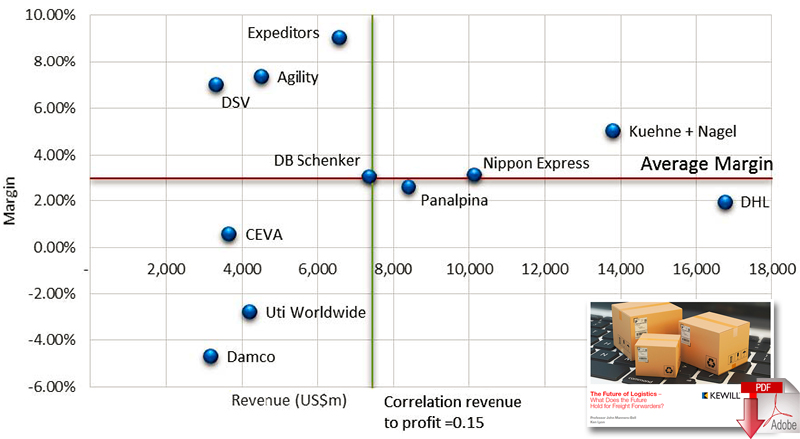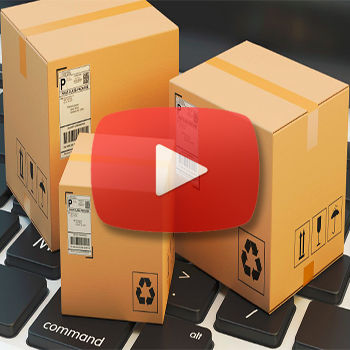What Does the Future Hold for Freight Forwarders?

The freight forwarding market is going through a structural change with logistics stakeholders needing far more visibility into their supply chain in 2016.
With highly volatile freight rates and oil prices, the freight forwarding market is undergoing structural changes and an uncertain global economic situation means that forwarders need to be attuned and responsive to macro-trends.
A recent study conducted by Kewill and Transport Intelligence titled “The Future of Logistics - What Does the Future Hold for Freight Forwarders?” found that many forwarders, even some of the largest, lack the tools that would give them the visibility and the agility to prosper in this challenging market environment.
According to Evan Puzey, chief marketing officer, Kewill, logistics stakeholders will need more visibility into their supply chain in 2016.
He notes that global flows of goods are becoming more disparate. In the early 1990s two thirds of global flows of goods moved through the top 50 routes.
Two decades later this has fallen to just over a half. Furthermore, he says intra-regional trade accounted for slightly over 50% of the value of total traded goods in 2014.

In an interview with Supply Chain Management Review, Puzey added that the freight forwarding industry is currently thought of as “unconcentrated” - what many consider to be tier one freight forwarders account for roughly 41% of the total market share.
Here are a few more insights Puzey shared with Supply Chain Management Review:
How do shippers work in an “unconcentrated” forwarder marketplace?
With difficulty, is probably the quickest and easiest answer.
Traditionally this interaction has been very manual, relying on the experience of the teams at both ends and the transfer of hard copy documents, the phone, fax and email.
The market is changing, but as always the bigger shippers and forwarders have led the change by moving the majority of the shipments to an electronic exchange of information. However, much of the mid-market and nearly all of the small operators in this space lack the IT and systems capability to leverage the direct connect options
Do they typically use multiple middlemen?
Yes. Most shippers in my experience have a number of forwarders in the mix.
This allows them to deal with fluctuations in their business and the forwarders. Sometimes they will have forwarders who specialize in certain types of goods that need special handling requirements.
Other times they will just be hedging their bets.
Let’s face it no VP of Supply Chain or Logistics wants a call from their CEO asking why orders haven’t been fulfilled and therefore revenue expectations not met. So by maintaining a number of forwarders they are able to minimize risk in many ways.
If the Transpacific-Trade Partnership is finally signed, how will forwarders respond?
These kinds of initiatives are generally beneficial to do business. Having lived and worked out of Singapore for Kewill, for a number of years I personally benefited from a similar initiative – Asia-Pacific Economic Cooperation (APEC).
In that case business travelers from member countries are enabled to travel with reduced visa restrictions to facilitate the ability of companies to improve international trade. So I was able to travel to many countries without having to go through the process of requesting visa’s and seeking pre-approval.
In this scenario we may see countries expedite the movement of goods for member countries making the forwarders life easier or lowering the barriers to trade which will make the shippers life easier.
Either way history has shown us that when it comes to moving goods that have a duty associated, and therefore are related to a countries revenues, the need to process declarations and meet compliance requirements and therefore ensure the appropriate duties and taxes are paid, is always a necessity.
So any forwarder looking at how this will effect hem in a day to day basis will probably see little difference certainly in the short term.
What opportunities exist for U.S. exporters seeking business in Cuba and Iran?
As these markets are opened to US exporters by changes in legislative sanctions, there will be a good opportunity for US exporters to tap into new markets.
Iran provides an interesting opportunity with the third largest population in the region, in excess of 80 million. As always with these kinds of new market opportunities there will undoubtedly be a number of trade issues to solve particularly in the approval process to enable the physical movement of goods and these generally speaking don’t get ironed out overnight.
It will take time to ensure the correct systems are in place on both sides and that they are configured to support the optimal movement of goods. There is a perfect opportunity for forwarders to establish themselves in these markets as soon as possible and provide local domain expertise to their Shipper customers.
We have also seen this over the last few year in places like Myanmar, where many forwarders have established offices to get ahead of the curve on increased trade and therefore gain more business.
Please explain how information technology and market intelligence helps shippers penetrate new markets while mitigating risk.
Technology systems that enable shippers and their forwarders to maximize the potential of new markets but stay within compliance will be critical to ensuring the most effective and efficient entry and operations in these new markets.
Leveraging the market intelligence of a locally based forwarder or logistics partner that has the crucial domain expertise for the specific operating model of that location will also be crucial as you can’t beat being on the ground when issues arise and in this business they always do!
That is where a good forwarder truly adds value and why most forwarders are moving towards making the shipment planning process as automated as possible so that their people can spend more time focused on making sure their customers shipments are moving to plan and that the customer is well informed and kept updated.
Freight Forwarder Revenues and Margins
Despite very similar business models, the diversity in levels of profitability between companies is remarkable. The chart below shows the considerable variance between best-in-class profitability and those forwarders performing least well. It is also evident that scale is no guarantee of profitability. Some small players have very good margins, but at the same time, some make big losses.

Download: The Future of Logistics – What Does the Future Hold for Freight Forwarders?
Article Topics
BluJay Solutions News & Resources
5 Signs You May Need a More Modern Supply Chain Solution How Supply Chains are Becoming Resilient Amid Disruptions Supply Chain 2020 Innovation Update BluJay research focuses on the need to build resilient supply chains 5 Signs It’s Time to Modernize Your Supply Chain Technology Supply Chains of the Future Boost the Power of Your Trading-Partner Network More BluJay SolutionsLatest in Transportation
Baltimore Bridge Collapse: Impact on Freight Navigating Amazon Logistics’ Growth Shakes Up Shipping Industry in 2023 Nissan Channels Tesla With Its Latest Manufacturing Process Why are Diesel Prices Climbing Back Over $4 a Gallon? Luxury Car Brands in Limbo After Chinese Company Violates Labor Laws The Three Biggest Challenges Facing Shippers and Carriers in 2024 Supply Chain Stability Index: “Tremendous Improvement” in 2023 More TransportationAbout the Author














